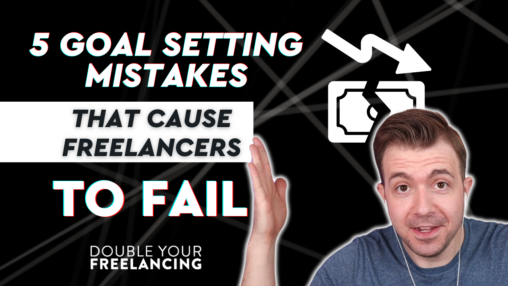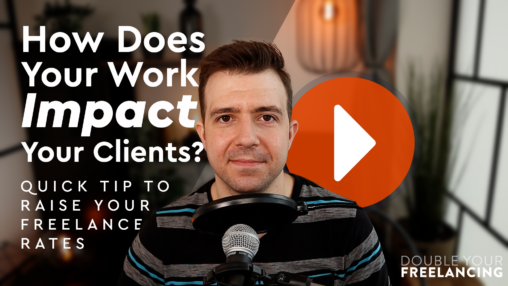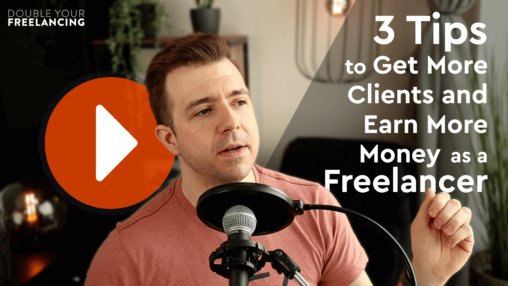Running your freelancing business
All the advice and tools you need to run a profitable and sustainable freelancing business.
Surprise! There’s much more to being a successful freelancer than being great at your craft.
In this section, we’ll equip you with the knowhow and tools you need to run a profitable and sustainable business. We’ll help you choose the right software, services, and tools for the job, and we’ll also show you how you can link these services together to automate parts of your business.
Additionally, we’ll help you make sure that you’re never strapped for cash by providing a few tips on keeping on top of your cash flow and business expenses.

OUR VIEWS ON RUNNING A BUSINESS:
- You should have a “data-driven” business. Find out how.
- You should automate as much of your business as possible so you can focus on serving and billing your clients. Find out how.
- You should create recurring revenue streams. Find out how.
Whether through 4+ years of in-depth articles, premium courses, the conferences and events I host, or my podcast, my #1 goal is to help you become a more successful freelancer.

Latest Articles on This Topic:
[Video] 5 Goal Setting Mistakes That Cause Freelancers to Fail
🎥 In This Video: You’ll learn essential tips to avoid common goal-setting mistakes freelancers make. Zach shares easy-to-follow strategies for setting achievable goals, improving lead generation, and boosting productivity. Discover why…
4 Strategies for Deeper Focus for Freelancers (Part 1)
Today we’re gonna optimize your productivity to get you more high-quality output in less time. Deep work and productivity are both super-important for freelancers because they help you raise your Effective Hourly…
How does your work IMPACT your client’s business?
Here’s something I try to always keep at the top of my mind… Clients don’t care about your service, they care about what they think your service will do for…
[Video] 3 Tips To Get More Clients and Earn More Money as a Freelancer
🎥 In This Video: Zach brings you 3 quick tips to get more clients and earn more money as a freelancer. Implementing even just one of these tips can be truly…
How To Earn Six Figures Without Hiring Anyone
Today’s post is part 2 of a previous post that I recommend reading first: “Do you need to grow a team to earn 6 figures?“ Background info from that last…
Do You Need To Grow a Team To Earn 6 Figures?
Today’s post was inspired by a challenge one of our DYF community members – let’s call him Sean – is experiencing. If you’re a freelancer who enjoys your craft (i.e….
Freelancing During A Recession
Let me open this article by making a few things clear: I’m not an economist. Nor am I a virologist. And I don’t have a crystal ball. However, given what…
Guide to Bookkeeping for Freelancers Part 1
In part one of this two-article series on freelance business finances, we will focus on businesses that are just starting out. If you’ve been in the game for a while,…
Breaking Up With a Client in 2024: How to Leave Without Burning Bridges
Note from Brennan: This post was originally a guest post by James Johnson of the Freelance Writers School. He’s stopped that project, but the content’s still great, so we’ve kept…
What Productivity for Independent Consultants looks like in the real world.
This guest post is brought to you by Francesca Geens, a UK based technology and productivity strategist, who loves nothing more than simplifying and untangling the way people do their…
All articles & guides on this topic
-
[Video] 5 Goal Setting Mistakes That Cause Freelancers to Fail
-
4 Strategies for Deeper Focus for Freelancers (Part 1)
-
How does your work IMPACT your client's business?
-
[Video] 3 Tips To Get More Clients and Earn More Money as a Freelancer
-
How To Earn Six Figures Without Hiring Anyone
-
Do You Need To Grow a Team To Earn 6 Figures?
-
Freelancing During A Recession
-
Guide to Bookkeeping for Freelancers Part 1
-
Breaking Up With a Client in 2024: How to Leave Without Burning Bridges
-
What Productivity for Independent Consultants looks like in the real world.
-
The Freelancer's Guide To Taxes
-
Why You Should Learn Marketing Automation
-
The End of Overdue Invoices
-
6 Traits Shared By Successful Freelance Consultants
-
Skills That Every Freelancer Should Have
-
How to Double Your Freelancing Income Without a Single New Client
-
The 2024 Ultimate Guide To Retainer Agreements
-
The Ultimate System For Automatically Qualifying, Scheduling, and Preparing New Project Leads
-
Panning for Smaller Offerings
-
Use Data To Overcome Doubt In Your Business
-
How To Hire An Accountant
-
The Freelancer's Guide To Recurring Revenue
-
How To Better Manage Your Freelancing Business
-
Cash Flow Tips For Freelancers
-
What's The Best Invoicing Software For Freelancers?








